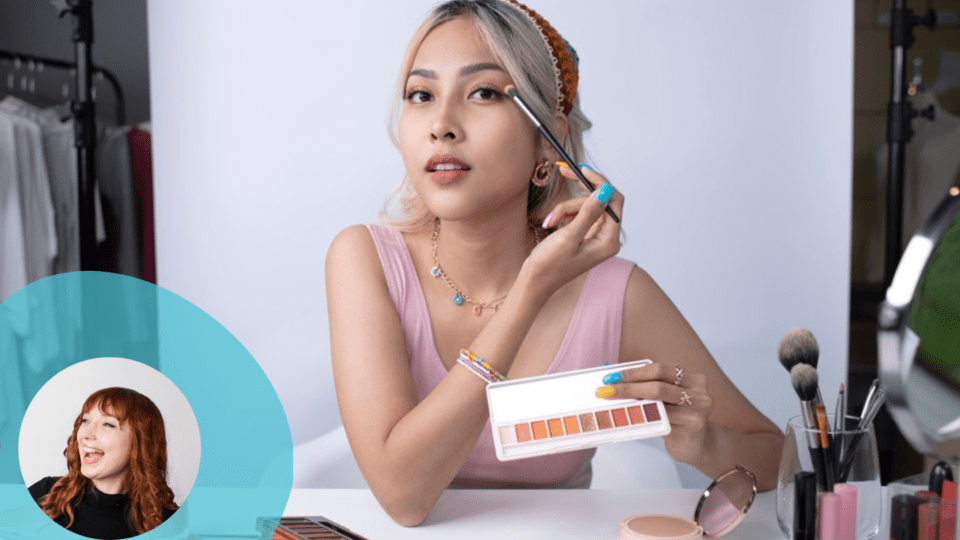Whether big or small in scale, influencer campaigns have had proven success in raising a beauty brand’s profile and driving sales, especially among younger generations scrolling through TikTok for the lowdown on the latest aesthetic. However, for challenger brands, these ‘pay-to-play’ spaces are dominated by household names with bigger budgets that ensure them (and their products) a larger share of voice.
So how can a new and revolutionary beauty brand get noticed? The answer is simple: by using Digital PR to engage with editorial sections of key media while also improving online visibility.
That’s especially important when today’s media-savvy consumer understands the difference between paid-for promotions and editorial reviews. They’re increasingly aware which endorsement is authentic and which might just be paying an influencer’s bills.
In fact, according to a recent study more than half (53%) of consumers do not trust influencer content. What’s more, paid banner ads as an alternative aren’t an efficient option, with just 25% of consumers ever having gone on to buy a product after seeing one.
For the beauty industry, staying authentic isn’t a nice idea, it’s a business imperative. This sector is held to the highest ethical standards by shoppers who want to make the most informed decisions possible as part of their commitment to conscious consumerism. Finding a transparent way to get skincare and haircare products featured is vital.
And that means having a stand-out Digital PR strategy.
What is Digital PR?
For those who aren’t familiar, Digital PR is the practice of placing trend-led data, quotes and creative within editorial sections of publications, often with a hyperlink back to the brand domain. As well as earning impressions from audiences more likely to connect positively with the brand in an organic (rather than paid) setting, Digital PR also helps strengthen brand positioning in organic search.
The best Digital PR campaigns use creative storytelling to bring the defining elements of a new brand to life. These are blended with media and consumer insights to create a campaign that truly speaks to targeted audiences.
A creative approach piques editorial interest, too. As nice as free samples sound, journalists in this sector get swamped with them, to the point where none stay front of mind for long or are guaranteed placement.
All activity is optimized to include the backlinks and topicality that improve a website’s organic search performance (or SEO). When working with true Digital PR specialists, a challenger brand can expect to see both brand and digital optimization undertaken in one service, rather than trying to merge two separate channels at extra expense.
Why Digital PR is Best for Beauty Challengers
Digital PR strategy begins with insight: understanding the brand’s story, USPs and how those resonate with beauty consumers is crucial. After that, the Digital PR team can get down to the nitty-gritty of message development and media targeting, keeping the consumer in mind.
Here are three foundations for Digital PR that can supercharge a beauty brand’s growth.
1. Data saves time and money.
More cost-effective than a brand shoot or sending product samples out to a wealth of publications, a data-led campaign can still earn coverage in Tier One lifestyle and beauty trade publications at scale, but without months of planning or large financial outlay. We’ve used data points to get beauty brands over 100 pieces of coverage with SEO benefit in a few weeks, in the likes of Glamour and Grazia, without a single promotional deal or sample circulated.
2. Evergreen stories keep paying off.
While ‘newsjacking’ or linking your brand to the newest aesthetic on everyone’s lips might drive success in the short term, campaigns that can easily be updated annually or that can be revived for new points in the news cycle will keep grabbing headlines without the additional pressure of creating new campaigns every week. Media have even been known to anticipate annual beauty reports or launches, meaning if your campaign is successful after the first two rounds of activity, actual organic coverage on the next update will free you up to concentrate on other elements of reaching the consumer.
3. Think about impact.
This doesn’t mean explaining at length your brand’s sustainable goals and practices (important, but already a bit old hat unless you have a new spin). It’s more a case of creating strong emotional links not just with the publication but also its audience. If you can showcase the link between your brand and the target audience’s priorities and needs, they’ll be likely to remember you positively – as a pioneering brand standing up for green values, for example, or as a knowledgeable trendsetter delivering them exactly the tips they need to keep ahead of the new trends. These impressions also will impact their view of your products, leaving a lasting impression that puts your brand on top of beauty consumers’ wish lists.
While social media and the ever-presence of influencers can’t be ignored, it’s clear that Digital PR can make beauty challenger brands shine in ways no other channel can. Isn’t it time you stopped paying lip service?
Jennifer Grey is the Head of Digital PR at Greenpark. She’s a one-stop shop when it comes to earned media for brands, boasting over 10 years of experience in Digital PR and Offsite SEO alongside stints in social media marketing, influencer management and event planning at the likes of Havas Media and Greenlight. She’s equally passionate about storytelling as she is about driving meaningful metrics that matter to stakeholders, winning awards from The Drum, The Lovies and more as a result. A typical PR, she loves nothing more than being onstage and has spoken at BrightonSEO and PRowly PR Episodes among others, both as an industry expert and as a mental health advocate.




